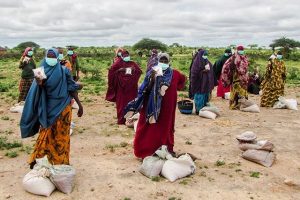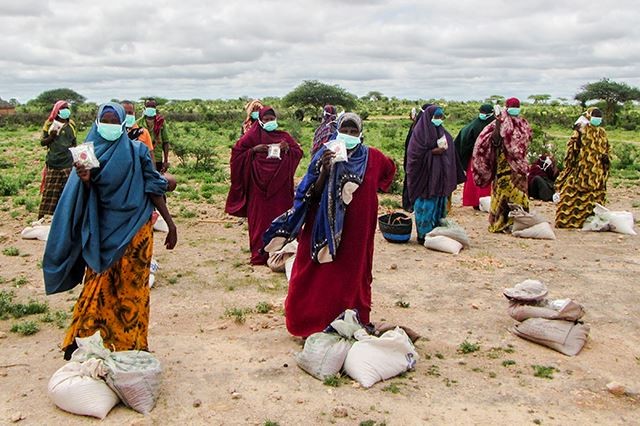
The Intergovernmental Authority on Development (IGAD) region faces an unprecedented triple threat to food security caused by the combined effects of recent severe floods, the ongoing COVID-19 pandemic and an upsurge of desert locusts. Additionally, there is an increased risk of below-average rains during the upcoming October to December season which could further threaten food security and livelihoods across the region.
Even before these current challenges, Eastern Africa was considered among the most food insecure regions of the world, with nearly 28 million people in Crisis (IPC Phase 3) or worse food insecurity in 2019, or 20% of the total severely food insecure population across the world.
An estimated 9 million children under the age of five suffer from acute malnutrition, including 2 million facing severe acute malnutrition.
The IGAD region is also one of the world’s leading sources and hosts of internally displaced persons (IDPs) and refugees and asylum seekers who, due to limited livelihood opportunities and degraded coping mechanisms, are particularly vulnerable to food insecurity and malnutrition. UNHCR estimates that the region currently hosts about 8 million IDPs and 4 million refugees and asylum seekers.
In this context of already high levels of food insecurity, the current triple threat facing vulnerable populations across Eastern Africa is expected to drive significant food security deteriorations in the absence of urgent action that protects lives and livelihoods, strengthens food systems, builds resilience across all vulnerable communities, and improves early warning systems and preparedness.
UNPRECEDENTED TRIPLE THREAT TO FOOD SECURITY
Between March and May 2020, heavy rainfall across the region resulted in widespread flooding and landslides across Djibouti, Ethiopia, Kenya, Somalia and Uganda. According to IGAD, 2.4 million people were affected, including 700,000 who were displaced and over 500 who were killed.
. This is in addition to previous flooding between October and December 2019, which affected 3.4 million people across the region
. Forecasts of above-average rainfall between June and September 2020, particularly across western Ethiopia, eastern South Sudan, Sudan, western Kenya and north and central Uganda increases the risk of additional flooding during the next several months.
Favourable weather and vegetation conditions across the Eastern African region in late 2019 to mid 2020 contributed to the worst desert locust upsurge in over 25 years, affecting all IGAD countries with varying levels of destruction to crops and pastureland. Kenya, Somalia, and Ethiopia are of the highest concern, with FAO indicating that up to 2.5 million people are becoming severely food insecure as a direct consequence of Desert Locust in the IGAD region.
As of 22 July, the IGAD region has seen over 47 000 COVID-19 cases. Following the first COVID-19 cases in the region in early 2020, governments imposed certain measures which, though necessary, have had food security and nutrition implications. For example, the resulting economic slowdown has led to significant declines in income levels for many vulnerable urban and rural cropping and pastoralist populations, compromising their access to food due to reduced purchasing power. Movement restrictions and border lockdowns are also disrupting food logistics and supply chains, which in turn has reduced food availability and increased post-harvest losses in parts of the region. Additionally, restrictions are impacting the movement and supply of agricultural inputs, including labour, fertilizers, pesticides and equipment, thus posing serious challenges to food production.
In addition to these three current challenges, rainfall for the upcoming October – December season is projected to be unfavourable with forecasts from major regional (ICPAC) and global (NOAA, IRI, UK MET, ECMWF) meteorological agencies all pointing to an increased risk of below-average rains across parts of the Horn of Africa.
Considering the combined effects on vulnerable populations of current and projected shocks, in addition to the protracted impacts of previous hazards, significant food security deteriorations across the region are now projected. Ongoing and upcoming food security assessments and IPC analyses will soon provide a better picture of food security outcomes. In the meantime, however, current estimates suggest that the compounding impacts of the COVID-19 pandemic, desert locust upsurge, and flooding may drive the population facing severe food insecurity up sharply by the end of 2020, potentially to 50.6 million people, or approximately 20% of the population in the IGAD region. Though the bulk of the food insecure population will remain in rural areas, these estimates assume a significant deterioration in food security amongst the urban poor, who are not often factored into IPC analyses and are driving the steep increases in humanitarian needs.
URGENT ACTION REQUIRED
As of 22 July 2020, the additional humanitarian requirements, on top of government resources, for food security, nutrition and livelihood support are USD3.4 billion for seven IGAD Member States (Djibouti, Ethiopia, Kenya, Somalia, South Sudan, Sudan, and Uganda). However, these requirements are just 33% funded, leaving a funding gap of USD2.3 billion, as per country-level HRPs, flash appeals, intersectoral COVID-19 response plans, and the global COVID-19 HRP.
Additionally, funding levels vary considerably from country to country across the region (Uganda: 0%, Kenya: 0%, Djibouti: 11%, Ethiopia: 20%, South Sudan: 35%, Sudan: 43%, and Somalia: 56%). This requires urgent attention considering that many governments will likely face significant difficulties responding to this large-scale crisis on their own.
IGAD REGIONAL FOOD SECURITY AND NUTRITION RESPONSE STRATEGY
Considering the major increases in food insecurity and unprecedented levels of humanitarian needs expected in the context of the current triple threat to food security and nutrition in the region, IGAD has developed a soon to be launched response strategy that proposes guidelines for a coherent approach to supporting all vulnerable populations and their livelihoods. The strategy outlines emergency, as well as medium to long-term, interventions that are required to safeguard livelihoods, sustain gains made so far in relation to food availability and access, treat and prevent acute and chronic malnutrition and ultimately save lives.
Priority strategic interventions should ensure strong collaborations between governments and humanitarian and development actors, providing immediate assistance to protect the lives and livelihoods of vulnerable populations, while at the same time, strengthening production and market systems, building household resilience and enhancing regional preparedness.
Populations facing Crisis (IPC Phase 3) or worse food insecurity typically face food consumption gaps, a rapid depletion of their livelihoods and increased rates of acute malnutrition. Immediate assistance is thus required for the millions of people across the IGAD region projected to face.
Download Joint StatementOriginally published at: http://www.fao.org/emergencies/fao-in-action/stories/stories-detail/en/c/1300765/

